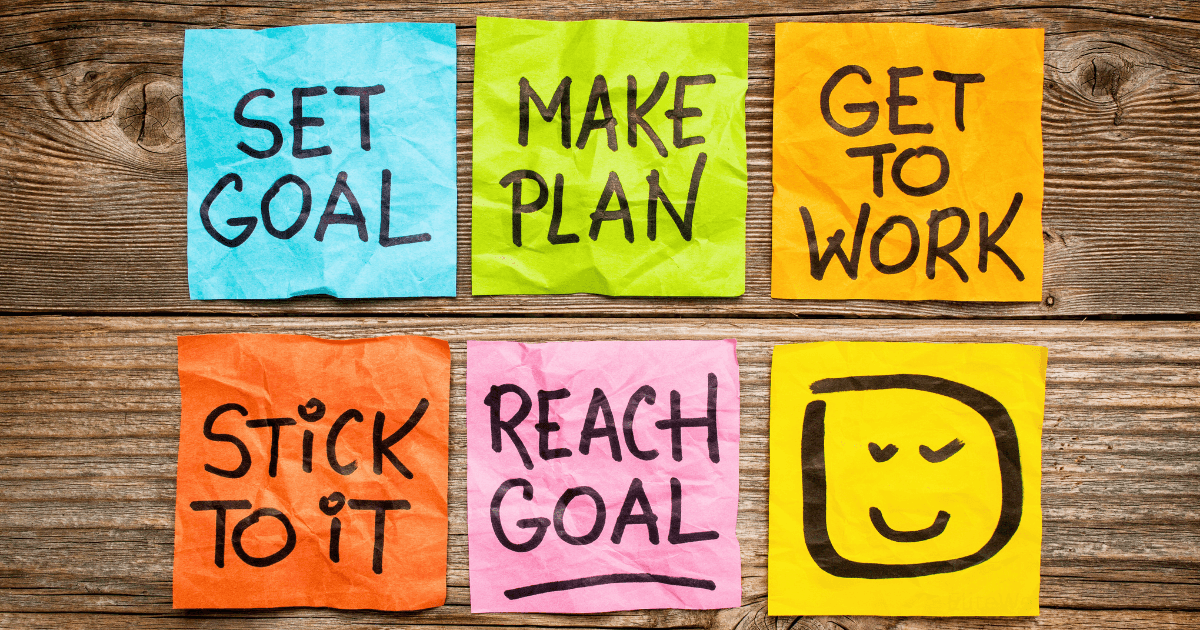Resilience Rituals: Daily Practices That Help Me Bounce Back From Business Setbacks

Last year, I lost my biggest client. Without warning, they slashed their budget and ended our three-year partnership, instantly wiping out 40% of my company’s revenue.
In the same month, a product launch we’d spent six months developing fell flat. The market response was lukewarm at best, devastating at worst.
And to complete the trifecta of business disaster, one of my key team members resigned to join a competitor.
It was the kind of perfect storm that tests any entrepreneur’s resolve. In previous years, setbacks like these would have sent me into a tailspin of doubt, anxiety, and paralysis that could last for weeks—precious time I couldn’t afford to lose while my business was vulnerable.
But this time was different. Within days, I had processed the emotional impact, developed a recovery plan, and was already taking action to rebuild. Within three months, we had replaced the lost revenue and were growing again.
The difference? A system of daily resilience rituals I had developed over the previous two years—practices that strengthened my ability to absorb shocks, process setbacks, and bounce back stronger.
Today, I’m sharing the specific daily practices that transformed my relationship with business adversity and helped me develop what psychologists call “psychological immunity”—the ability to recover from setbacks quickly and effectively.
The Science of Resilience Rituals
Before diving into the specific practices, it’s worth understanding why rituals are so powerful for building resilience.
According to research from the American Psychological Association, resilience isn’t a trait that people either have or don’t have—it involves behaviors, thoughts, and actions that can be learned and developed by anyone.
Rituals are particularly effective for building resilience because they:
- Create predictability in unpredictable circumstances: When business throws you curveballs, rituals provide a stable foundation.
- Activate the parasympathetic nervous system: Regular calming practices counteract the stress response.
- Build “resilience muscles” proactively: Daily practice strengthens your capacity to handle challenges before they arise.
- Provide immediate agency: Rituals give you something constructive to do when circumstances feel out of control.
A 2024 study published in the Journal of Business Venturing found that entrepreneurs who engaged in daily resilience practices recovered from business setbacks 40% faster than those who didn’t have such routines.
With that foundation, let’s explore the specific rituals that have made the biggest difference in my own resilience journey.
Morning Rituals: Setting a Resilient Foundation
1. The Three-Breath Reset (2 minutes)
Every morning, before checking email or news, I practice what I call the Three-Breath Reset:
- First breath: Inhale slowly for 4 counts, hold for 2, exhale for 6. During this breath, I acknowledge whatever emotions are present without judgment.
- Second breath: Same breathing pattern, but this time I consciously release tension from my body, scanning from head to toe.
- Third breath: With the same pattern, I set an intention for how I want to show up today, regardless of circumstances.
This micro-practice takes just two minutes but creates a powerful mind-body reset that prepares me for whatever the day might bring. On particularly challenging mornings after a business setback, I might extend this to five or ten breaths.
2. The Resilience Journal (7 minutes)
After my breathing practice, I spend seven minutes writing in what I call my Resilience Journal. Unlike traditional journaling, this has a specific three-part structure:
- Part 1: Challenges – I briefly note any current business challenges or setbacks I’m facing.
- Part 2: Resources – I list three internal resources (personal strengths, experiences, skills) and three external resources (people, tools, opportunities) that can help me navigate these challenges.
- Part 3: Next Right Step – I identify just one small, concrete action I can take today to move forward.
This structured reflection prevents me from ruminating on problems and redirects my focus to resources and action. During major setbacks, reviewing previous entries also reminds me of challenges I’ve already overcome.
3. Physical Resilience Practice (20 minutes)
Research from the Harvard Business Review shows that physical movement is one of the most effective ways to build stress resilience. My non-negotiable morning ritual includes 20 minutes of movement that combines:
- Strength training (bodyweight exercises)
- Mobility work
- Brief cardiovascular bursts
The specific exercises vary, but the consistent practice sends a powerful message to my brain: “We can do hard things.” This physical resilience directly translates to mental resilience when business challenges arise.
On days following major setbacks, I make this workout slightly more challenging than usual—a counterintuitive approach that reminds me of my capacity to rise to challenges.
Midday Rituals: Maintaining Resilience Through the Workday
4. The Perspective Pivot (5 minutes)
At midday, usually before lunch, I practice what I call the Perspective Pivot. This ritual is specifically designed to reframe setbacks and challenges:
- I write down one business challenge I’m currently facing.
- I ask myself three perspective-shifting questions:
- What might this challenge be teaching me?
- How might this apparent setback be setting me up for a future opportunity?
- What strengths am I developing by facing this challenge?
- I write down at least one insight from this reflection.
This practice has been transformative in changing my relationship with business difficulties. For example, when we lost our biggest client, this exercise helped me recognize that we had become dangerously dependent on a single revenue source—a vulnerability we needed to address for long-term sustainability.
5. The Connection Call (10 minutes)
Isolation amplifies the impact of business setbacks. Research from Stanford University shows that social connection is one of the strongest predictors of resilience.
My daily ritual includes one 10-minute “connection call” with someone in my support network—a mentor, a fellow entrepreneur, or a supportive friend. These calls follow a specific format:
- A brief check-in on how we’re both doing
- Sharing one current challenge
- Exchanging one piece of perspective or advice
- Expressing one thing we’re each grateful for
These structured conversations provide emotional support, practical insights, and a reminder that I’m not alone in facing business challenges. During particularly difficult periods, I might increase these to 2-3 calls per day.
6. The Strategic Pause (3 minutes)
Between meetings or tasks, I practice the Strategic Pause—a brief ritual that prevents stress accumulation and maintains cognitive resilience:
- Close my eyes and take three deep breaths
- Roll my shoulders and stretch my neck
- Ask myself: “What’s most important right now?”
- Reset my intention for the next activity
This micro-practice interrupts the momentum of stress and helps maintain focus and perspective throughout the day. During periods of business crisis, these pauses become even more frequent and essential.
Evening Rituals: Processing and Recovering
7. The Daily Debrief (10 minutes)
At the end of each workday, I conduct a structured debrief in my journal:
- What went well today? (I list at least three things, no matter how small)
- What challenges did I face? (Objective description without judgment)
- What did I learn? (Insights about myself, my business, or the situation)
- What will I do differently tomorrow? (Specific, actionable adjustments)
This ritual helps me extract learning from difficulties, celebrate small wins, and create closure at the end of the workday. During periods of significant business setbacks, this practice prevents me from carrying stress into my evening and helps me maintain perspective.
8. The Gratitude Trio (3 minutes)
Before dinner, I practice a brief gratitude ritual that specifically focuses on business, even during challenging times:
- One thing I’m grateful for about my business journey
- One person I’m grateful to have in my professional life
- One skill or strength I’m grateful to possess
Research from UC Davis psychologist Robert Emmons shows that gratitude practices significantly increase resilience to stress and setbacks. By focusing specifically on business-related gratitude, this ritual helps maintain a balanced perspective even during difficult periods.
9. The Recovery Hour (60 minutes)
Perhaps the most important resilience ritual is my non-negotiable Recovery Hour—60 minutes each evening dedicated to activities that replenish my mental and emotional resources:
- Reading fiction (not business books)
- Creative hobbies unrelated to work
- Time in nature
- Deep conversations unrelated to business
- Mindfulness practices
The specific activity varies, but the principle remains constant: true resilience requires recovery. This hour is sacred and protected, especially during business crises when the temptation to work around the clock is strongest.
The Resilience Ritual System in Action
These nine daily practices form my complete resilience ritual system. On normal business days, they take a total of about 2 hours, spread throughout the day. During periods of significant setbacks, I might extend certain practices but maintain the same basic structure.
The key is consistency. These aren’t practices I turn to only when facing challenges—they’re daily rituals that build my “resilience muscles” proactively, so I have the strength to face setbacks when they inevitably arise.
How These Rituals Transformed My Response to Business Setbacks
To illustrate the impact of these rituals, let me share how they transformed my response to the three simultaneous business crises I mentioned at the beginning:
Before Developing Resilience Rituals:
When facing similar setbacks in the past, my typical response was:
- Emotional spiral: Anxiety, self-doubt, catastrophizing
- Physical symptoms: Insomnia, tension headaches, digestive issues
- Decision paralysis: Inability to take clear action for days or weeks
- Isolation: Withdrawing from support networks out of shame
- Recovery time: 3-4 weeks before regaining full productivity
After Implementing Resilience Rituals:
With my resilience ritual system in place, my response to the recent triple crisis was dramatically different:
- Emotional processing: Acknowledged difficult emotions without being overwhelmed
- Physical resilience: Maintained sleep quality and energy through consistent practices
- Strategic action: Developed and implemented a recovery plan within days
- Connection: Actively engaged support network for perspective and assistance
- Recovery time: Back to full productivity within one week
The difference wasn’t that I didn’t feel the impact of these setbacks—I absolutely did. The difference was in how quickly I could process those feelings and move into constructive action.
How to Develop Your Own Resilience Ritual System
While my specific practices might not all resonate with you, the principles behind them can be adapted to create your own resilience ritual system:
1. Start Small and Build Gradually
Begin with just one morning and one evening practice, perhaps 5 minutes each. Once these become habitual (usually after about 30 days), add a midday practice. Gradually build to a complete system that works for your schedule and preferences.
2. Focus on the Four Pillars of Resilience
Ensure your rituals address all four pillars of resilience:
- Mental resilience: Practices that build cognitive flexibility and perspective
- Emotional resilience: Practices that help process and regulate emotions
- Physical resilience: Practices that strengthen the body-mind connection
- Social resilience: Practices that foster supportive connections
3. Create Trigger-Based Micro-Rituals
In addition to scheduled rituals, develop micro-practices triggered by specific business situations:
- When receiving disappointing news
- Before difficult conversations
- After making mistakes
- When facing uncertainty
These situation-specific rituals provide immediate tools for navigating challenges in real-time.
4. Track Your Resilience Progress
Keep a simple record of:
- How consistently you practice your rituals
- How quickly you recover from setbacks
- Patterns you notice in your resilience capacity
This data helps refine your system over time and provides encouraging evidence of your growing resilience.
Common Obstacles and How to Overcome Them
In implementing these rituals, I’ve encountered several common obstacles:
“I don’t have time for all these practices.”
Solution: Start with just 5 minutes morning and evening. Remember that resilience practices ultimately save time by preventing prolonged recovery periods after setbacks.
“I forget to do my rituals when I’m stressed.”
Solution: Use visual reminders and environmental cues. I have small symbols on my desk, computer, and phone that prompt my practices.
“These practices feel selfish when my business is in trouble.”
Solution: Reframe resilience as a business responsibility. Your ability to recover quickly from setbacks directly impacts your team, customers, and company outcomes.
“I don’t see immediate results.”
Solution: Track your resilience metrics over time. Like physical fitness, resilience builds gradually but yields powerful long-term results.
The Compound Effect of Resilience Rituals
What makes resilience rituals so powerful is their compound effect over time. Each individual practice might seem small, but together they create a fundamental shift in how you respond to business challenges.
After two years of consistent practice, I’ve noticed these long-term changes:
- Faster recovery: What once took weeks to bounce back from now takes days or even hours
- Improved perspective: I can see opportunities in setbacks much more quickly
- Enhanced decision-making: I make clearer decisions under pressure
- Stronger relationships: My support network has deepened through regular engagement
- Greater business antifragility: My business actually gets stronger from setbacks rather than merely surviving them
Conclusion: Resilience as a Business Advantage
In today’s volatile business environment, resilience isn’t just a personal quality—it’s a significant competitive advantage. The entrepreneurs and leaders who can absorb shocks, learn from setbacks, and quickly return to effective action are the ones whose businesses will thrive long-term.
The daily rituals I’ve shared aren’t about avoiding difficulty or denying the real impact of business setbacks. They’re about developing the capacity to face these challenges directly, process them effectively, and emerge stronger on the other side.
As entrepreneur and author Tim Ferriss puts it, “The quality of your life is directly proportional to the quality of your daily habits.” I would add that the resilience of your business is directly proportional to the quality of your daily resilience rituals.
What small resilience practice could you begin today?






